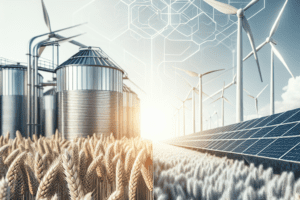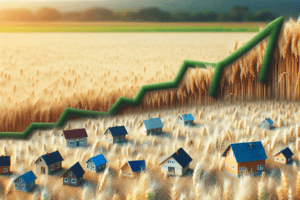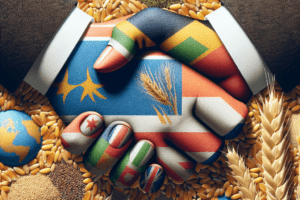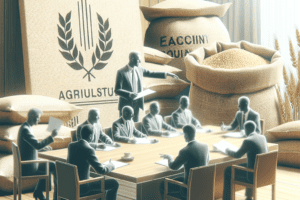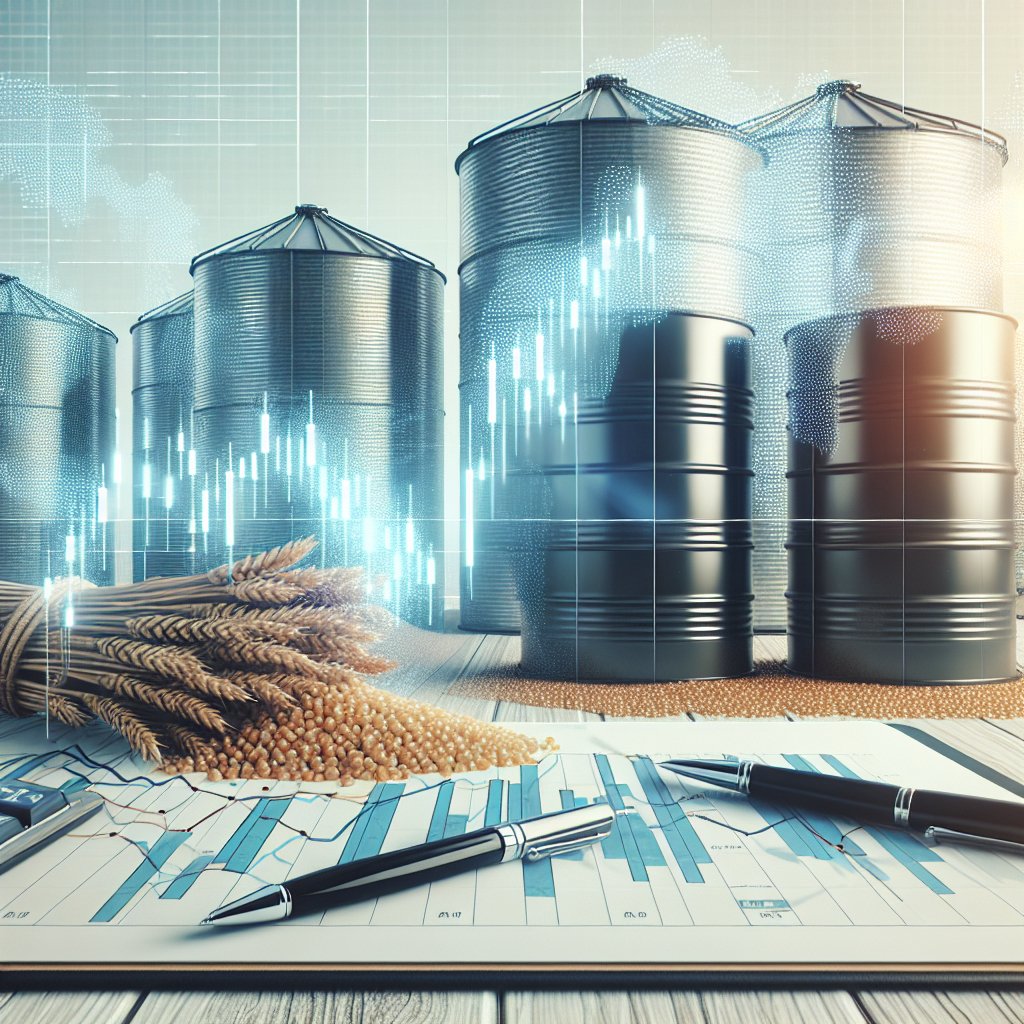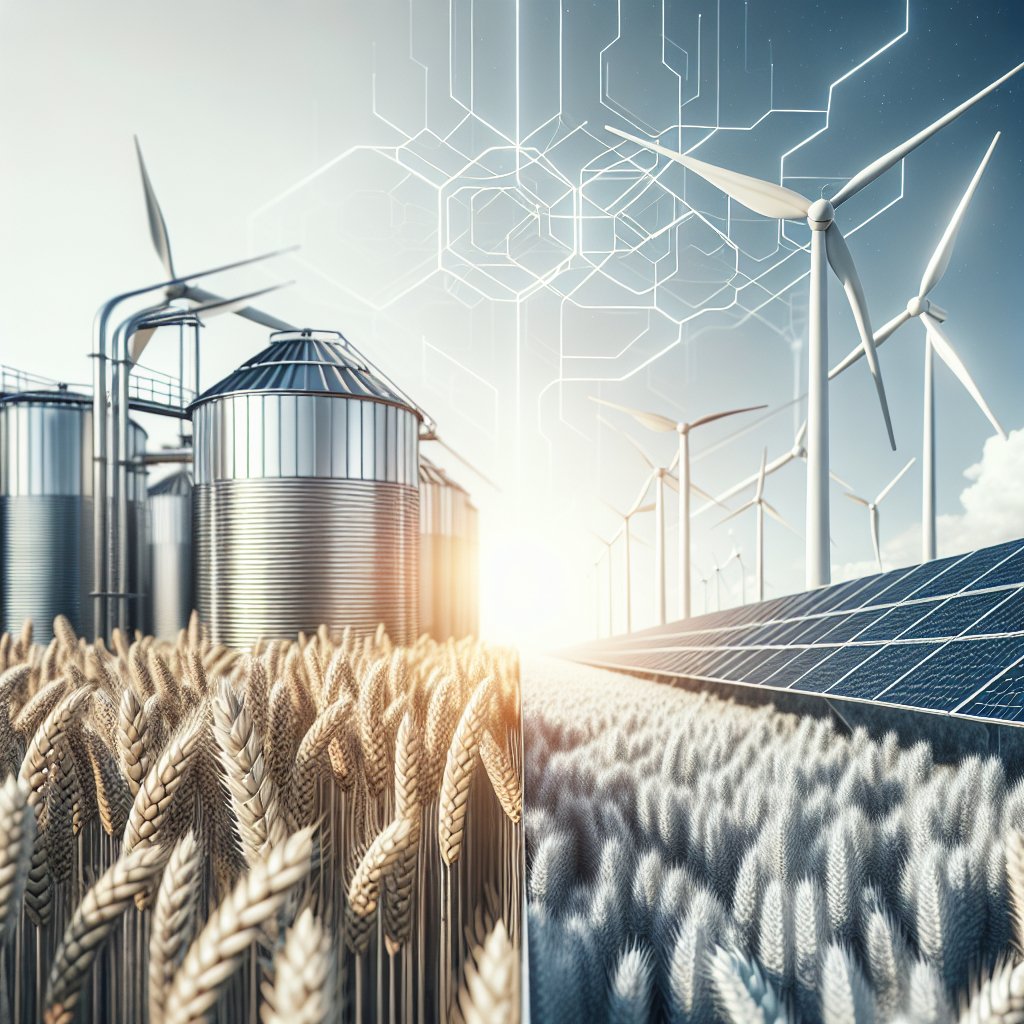The relationship between grain prices and oil markets is a complex and multifaceted topic that has significant implications for global economies, food security, and agricultural practices. As two critical components of the global market, fluctuations in oil prices can have a direct impact on grain prices, and vice versa. Understanding this relationship is essential for farmers, investors, policymakers, and consumers alike, as it influences everything from planting decisions to food prices at the grocery store. This article will explore the dynamics of this relationship, examining the factors that drive changes in both markets and the consequences of these fluctuations.
Understanding the Basics: Grain Prices and Oil Markets
Grain prices are determined by a variety of factors, including supply and demand dynamics, weather conditions, and global trade policies. Major grains such as wheat, corn, and rice are staples in the diets of billions of people worldwide, making their prices a critical concern for food security. On the other hand, oil markets are influenced by geopolitical events, production levels, and global consumption patterns. The interplay between these two markets is often overlooked, yet it is crucial for understanding the broader economic landscape.
The Role of Oil in Agriculture
Oil plays a vital role in modern agriculture, serving as a key input in various stages of grain production. From the fuel used in tractors and other machinery to the production of fertilizers and pesticides, oil is integral to the agricultural process. As oil prices rise, the cost of these inputs also increases, leading to higher production costs for farmers. This, in turn, can result in higher grain prices as farmers seek to maintain their profit margins.
- Fuel Costs: The cost of diesel and gasoline directly affects the operational expenses of farming. When oil prices surge, farmers face increased costs for planting, harvesting, and transporting their crops.
- Fertilizer Prices: Many fertilizers are derived from petroleum products. As oil prices rise, so do the costs of fertilizers, which can lead to reduced application rates and potentially lower yields.
- Transportation Costs: The transportation of grains from farms to markets is heavily reliant on oil. Higher oil prices can lead to increased shipping costs, which are often passed on to consumers in the form of higher food prices.
Grain Prices as a Response to Oil Market Fluctuations
When oil prices rise, the immediate effect on grain prices can be seen through increased production costs. However, the relationship is not always straightforward. In some cases, higher oil prices can lead to increased demand for biofuels, which are often produced from grains such as corn and sugarcane. This can create upward pressure on grain prices as producers shift their focus to biofuel production in response to market signals.
- Biofuel Demand: As governments around the world push for renewable energy sources, the demand for biofuels has increased. This can lead to higher grain prices as more crops are diverted from food production to fuel production.
- Speculation and Investment: Oil price fluctuations can attract speculative investment in grain markets. Investors may buy grains as a hedge against rising oil prices, further driving up prices.
- Global Trade Dynamics: Changes in oil prices can also affect global trade patterns. Countries that are net importers of oil may see their grain prices rise as transportation costs increase, while oil-exporting countries may experience different dynamics.
The Broader Economic Implications
The relationship between grain prices and oil markets has far-reaching economic implications. For consumers, rising grain prices can lead to higher food costs, impacting household budgets and food security. For farmers, fluctuating prices can create uncertainty, making it challenging to plan for the future. Additionally, policymakers must navigate these complexities to ensure food security and economic stability.
Impact on Food Security
Food security is a pressing global issue, and the relationship between grain prices and oil markets plays a significant role in this context. When oil prices rise, the subsequent increase in grain prices can disproportionately affect low-income populations, who spend a larger share of their income on food. This can lead to increased hunger and malnutrition, particularly in developing countries where agricultural systems are more vulnerable to price shocks.
- Access to Food: Higher grain prices can limit access to food for vulnerable populations, exacerbating existing inequalities.
- Nutrition Quality: As prices rise, consumers may opt for cheaper, less nutritious food options, leading to poorer dietary quality.
- Policy Responses: Governments may need to implement policies to mitigate the impact of rising food prices, such as subsidies or food assistance programs.
Investment and Market Speculation
The interplay between grain prices and oil markets also attracts significant investment and speculation. Investors often look to commodities as a hedge against inflation or economic uncertainty. When oil prices rise, investors may flock to grain markets, driving up prices further. This speculative behavior can create volatility in grain prices, making it difficult for farmers to plan their production and for consumers to predict food costs.
- Market Volatility: Speculation can lead to sharp price swings, creating uncertainty for both producers and consumers.
- Long-term Trends: Understanding the long-term trends in oil and grain prices can help investors make informed decisions, but it requires careful analysis of market dynamics.
- Risk Management: Farmers may need to employ risk management strategies, such as futures contracts, to protect themselves from price fluctuations.
Conclusion: Navigating the Interconnected Markets
The relationship between grain prices and oil markets is a critical area of study for anyone involved in agriculture, investment, or policy-making. As global economies continue to evolve, understanding the factors that drive these markets will be essential for ensuring food security and economic stability. By recognizing the interconnectedness of these two markets, stakeholders can better navigate the challenges and opportunities that arise from fluctuations in oil and grain prices.
In conclusion, the dynamics between grain prices and oil markets are complex and influenced by a myriad of factors. As we move forward, it is crucial for all stakeholders to remain vigilant and informed about these changes, as they will undoubtedly shape the future of agriculture and food security worldwide.


